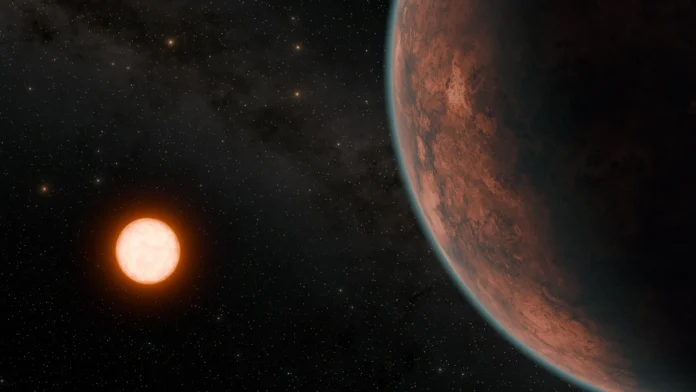

What can the external planets teach the size of the Earth to scientists about the formation and development of external planets throughout the universe? This is what was recently presented Ticket He announced a reflection on his treatment as an international team of those looking for the discovery of external planets the size of the Earth, which shows temperatures and density similar to the Earth.
This study has the ability to help scientists a better understanding of the formation and development of external planets the size of the Earth and what this might mean to find life outside the earth, Universetoday.com Reports.
For the study, the researchers used the Maroon-X tool at the University of Chicago to analyze the GJ 12 B (also known as Gliese 12 B), which is located about 40 light-years away from Earth and an unrecrative M DWARF star, which means decrease in solar activity compared to other stars.
GJ 12B was discovered by Exoplanet Exoplanet (TESS) in 2024, a half -diameter temperature measures about 300 kg (26.85 ° C/80.33 Fahrenheit) and 0.96 Earth respectively.
Now, researchers used Maroon-X to measure the GJ 12 B block and strange in about 0.71 ground and 0.16, respectively. For the context, the strangeness of the earth is 0.0167, where the weird is measured from 0 to 1 as a perfect and completely extensive circle, respectively.
https://www.youtube.com/watch?
The GJ 12B mass has been able to researchers to estimate its density almost equally or slightly less than the ground. Researchers note that the NAST JMST telescope can be used to make more depth notes for GJ 12 B, specifically its atmosphere.
“It seems that the GJ12B has an Earth or underground density,” the study notes. “The low density can be explained if the planet has a volatile component (such as mixed water inside the scarf), atmosphere, low -iron part, or a mixture of these factors.
The low mass (and thus low surface gravity) may have a widespread atmosphere that would be very capable of JWST notes, but it is also possible that the planet has a very low mass to maintain a long -term atmosphere unless it is regularly renewed by the volcanic tidal and carrots. “
The researchers compared the characteristics of the planets and the system of the GJ 12 B and M, its dwarf with TRAPPIST-1, which the latter contains seven planet outside the Earth’s planets revolving around the M. DWARF star. Although the GJ 12 B is the only confirmed external planets in its system, it revolves inside the inner edge of the star suitable for housing, while three of the seven-sized planets are within the orbits of the Trapping-1 system within the area suitable for housing.
The reason for comparison with Trapping-1 is that researchers assume that the GJ 12 B study can prove promising due to its lack of activity, while the Trappist-1 activity makes studying the atmosphere of external planets difficult.
As it was observed, this study was conducted with the Maroon-X tool at the University of Chicago, which was designed to study the events of the external planets the size of the Earth inside the areas suitable for the M. DWARF stars and are installed at the International Gemini Observatory.
Maroon-X uses the radial speed method, which measures the oscillation that occurs between the external planets and its star, with the latter frequently using the planetary properties such as mass and half of the diameter and weakness. Recently, Maroon-X has been used to discover four MINI-Earths stars that revolve around Barnard, which is about 6 light-years away from Earth.
As the number of confirmed external planets approaches 6000, the external planets like GJ 12 B helps astronomers better understand the formation and development of external planets that revolve around M DWARF stars, which are the latter smaller than our sun.
What are the new discoveries about GJ 12 B and other external planets the size of the Earth that researchers will make in the coming years and decades? Only the time will tell us, that is why we know!

